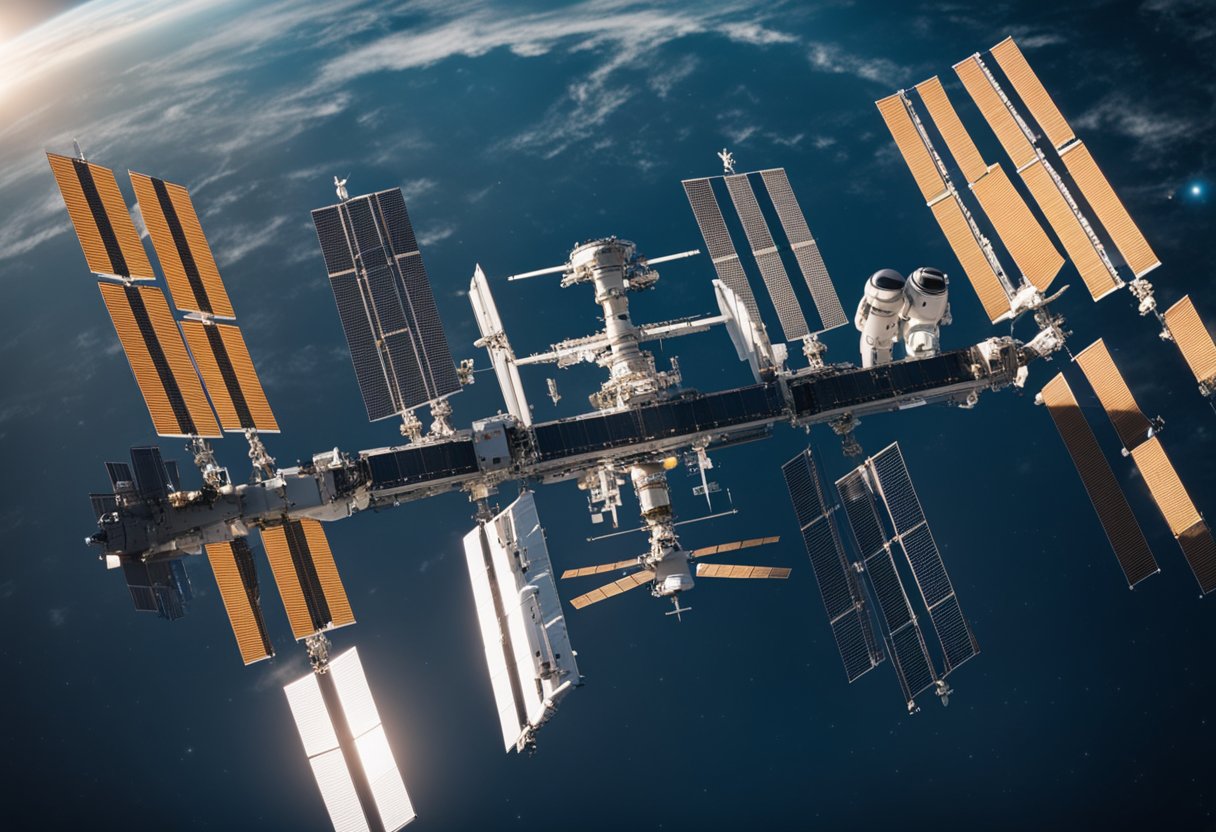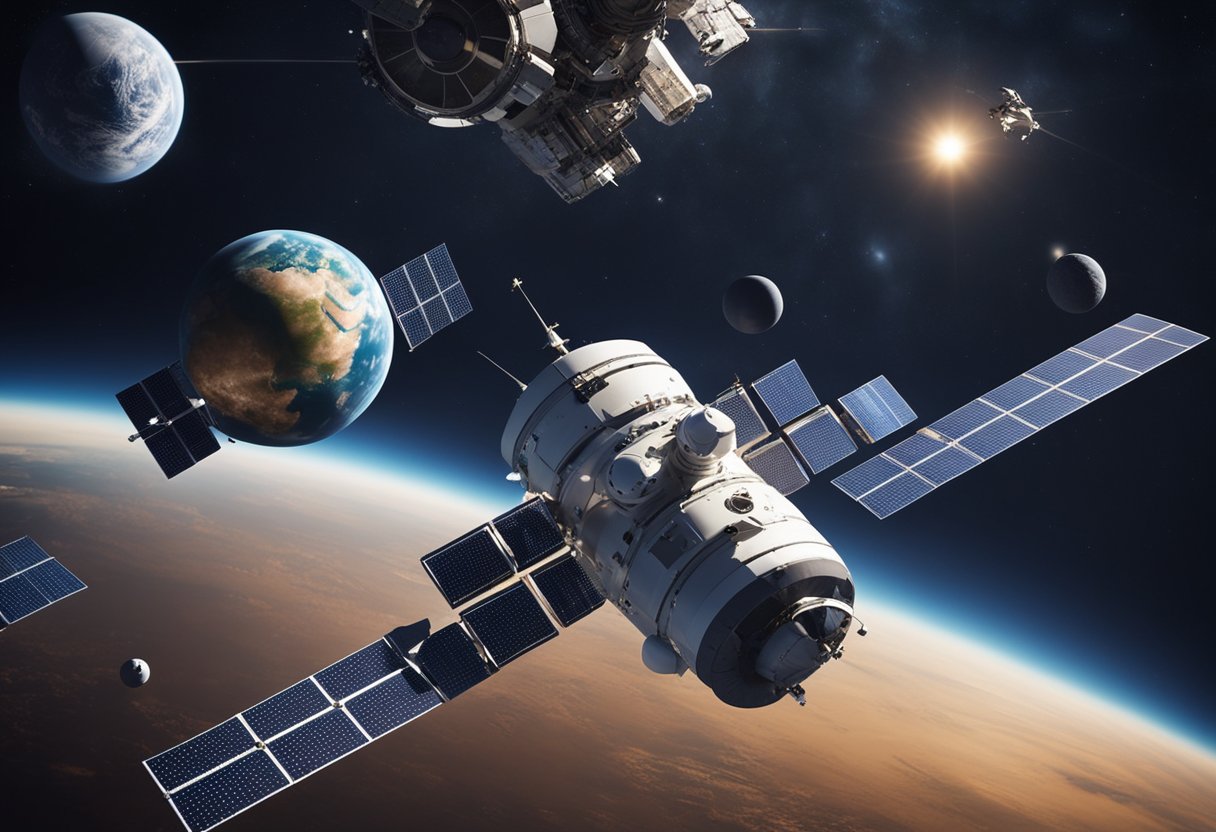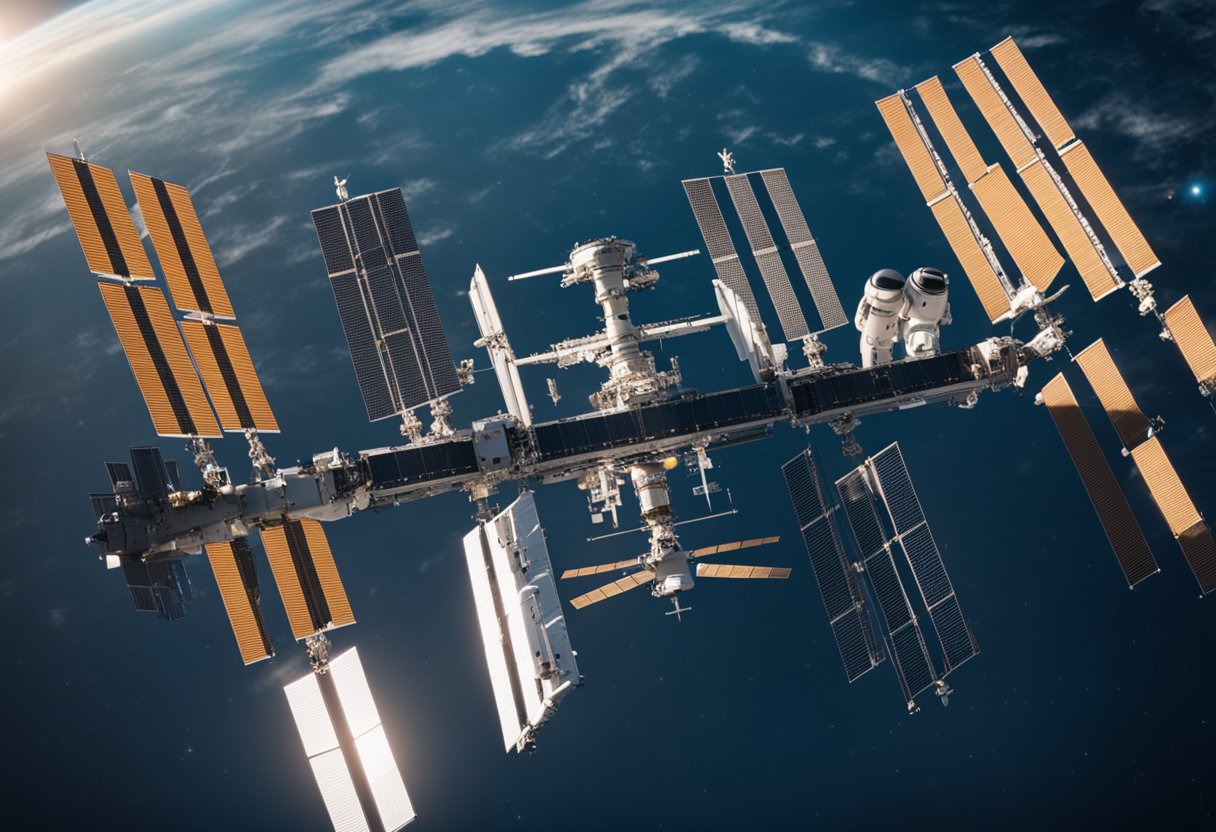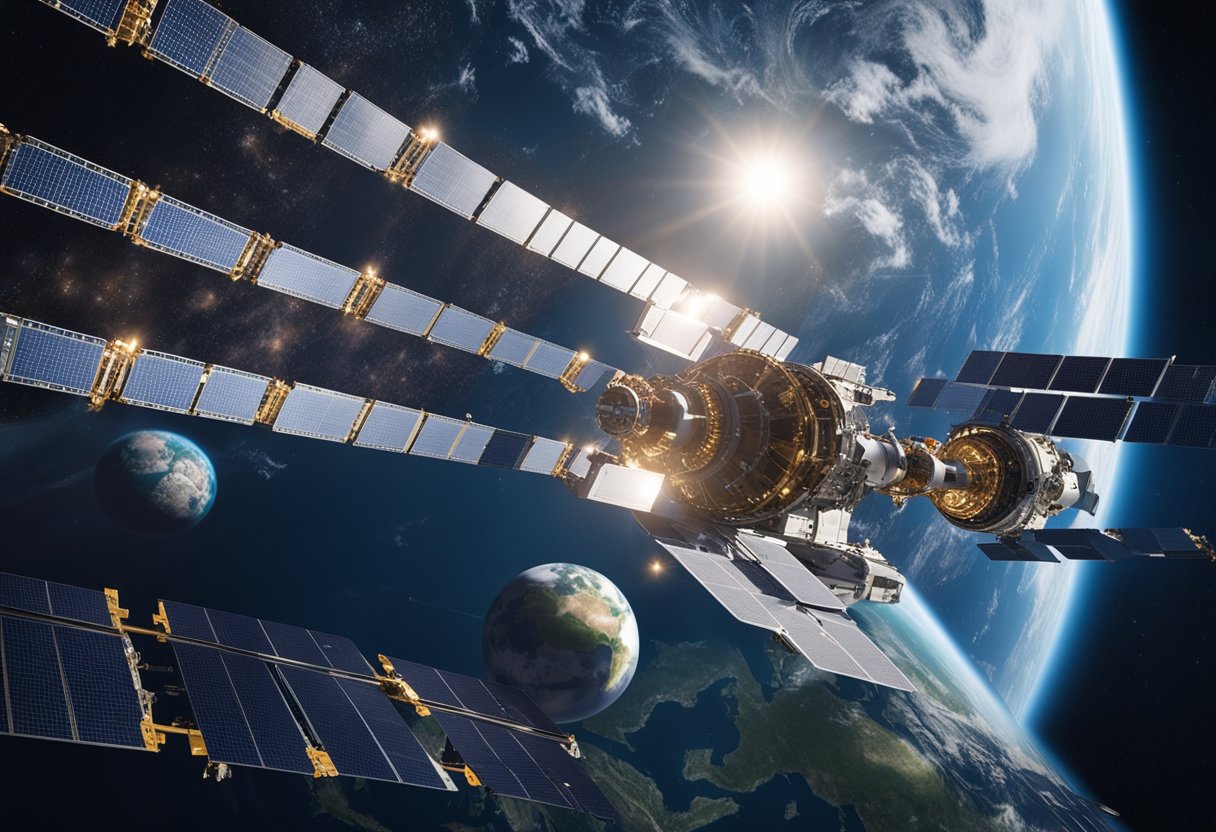
International partnerships in space missions are integral to the advancement of humanity’s presence beyond Earth. As we reach further into the cosmos, the collective efforts of nations around the world have proven essential in pooling resources, knowledge, and expertise. Such collaborations are not just beneficial; they’re necessary for the monumental task of space exploration. The pooling of these resources has allowed us to build and maintain complex structures like the International Space Station, which serves as a testament to what can be achieved through international cooperation.

The history of our ventures into space is marked by a shift from solitary pursuits to united endeavours. Agencies such as NASA, Roscosmos, ESA, JAXA, and CSA play pivotal roles in fostering unity and pushing the boundaries of our exploratory capabilities. Together, these entities work within a legal framework that governs space activity, ensuring responsible conduct among nations. The inclusion of the private sector has introduced innovative approaches to space travel and infrastructure, further widening the scope for scientific research and potential for sustainable exploration.
As we explore the history of international partnerships in space, we’ll see how collaboration has been pivotal since the earliest days of space exploration, through the intense competition of the Space Race, to the unprecedented cooperation of the post-Cold War era.
The genesis of space diplomacy can be traced back to our collaborative endeavours starting in the 1950s and 1960s. These early years were marked by a spirit of scientific exploration shared across borders. Notably, the International Geophysical Year (IGY) of 1957–1958, although not a space mission, was an international scientific project that laid the groundwork for future space collaboration. During IGY, scientists from 67 countries, including the US and USSR, cooperated to study geophysical phenomena.
During the Space Race, competition often overshadowed collaboration. However, it’s essential to recognise milestone projects like the Apollo-Soyuz Test Project in 1975 which brought NASA and the Soviet space agency, at the time, Roscosmos, together for the first joint US-Soviet space flight, marking a thaw in space relations and setting the stage for future partnership.
Post-Cold War, we’ve witnessed an unprecedented level of international cooperation in space exploration. A shining example is the International Space Station (ISS), a joint project involving space agencies such as NASA, Russia’s Roscosmos, the European Space Agency (ESA), and the Japan Aerospace Exploration Agency (JAXA). This floating laboratory exemplifies our collective quest for scientific knowledge, transcending terrestrial politics.
In our current landscape, intensified partnership is the norm, with multinational endeavours like the ISS demonstrating our shared dedication to furthering space science and exploration. While respective space agencies continue to push their individual agendas, it’s our collaborative missions that often produce the most significant scientific breakthroughs and foster peace through a unified pursuit of the greater good.
In the realm of extraterrestrial exploration, several space agencies and international partnerships play crucial roles. These entities contribute expertise, resources, and strategic collaborations that propel human presence in space.
NASA stands at the forefront of international space exploration, working with a multitude of global partners. Via the Artemis program, it aspires to return humans to the Moon and eventually advance to Mars and further. Notable collaborations include the International Space Station (ISS) with multiple countries contributing to this symbol of cooperative achievement.
The European Space Agency (ESA), representing interests across Europe, is pivotal in advancing space exploration efforts. With projects including the ExoMars rover and the Copernicus Earth observation programme, ESA’s collaboration with entities like NASA enhances technological and scientific research.
Roscosmos, the Russian space agency, historically significant in the space race, continues to engage in global agreements despite recent geopolitical tensions. Its participation in the ISS and joint missions with other countries remains a testament to international cooperation in space.
JAXA, the Japan Aerospace Exploration Agency, reinforces Asian leadership in space endeavours. It partakes in asteroid missions like Hayabusa2 and contributes to the ISS, fortifying Japan’s role within the wider network of space partnerships.
With these agencies at the helm, international efforts in space exploration continue to evolve, enhancing not only scientific understanding but also peaceful relations among nations.
In establishing the foundation for international cooperation in space, legal frameworks and global policies play critical roles in maintaining a rules-based international order. These elements ensure that the shared goals of sustainability, peace, and cooperation in space exploration are upheld.
International space law constitutes the body of treaties, agreements, and principles governing outer space activities. At its core, the Outer Space Treaty provides the basic framework on international space law, encompassing the principle that outer space is the province of all mankind, denoting its use for peaceful purposes, and prohibiting the placement of nuclear weapons in space. We note the commitment of the United Nations and states within the United States to uphold and contribute to the development of these laws, enhancing international partnership. Emphasis on openness and transparency is essential, as these traits foster trust and collaboration among spacefaring nations.
The Artemis Accords, spearheaded by the United States, represent a critical step towards a novel framework for lunar exploration. They aim to establish safe zones around landing sites to prevent conflict and accidental harm, and they emphasise the registration of space objects to enhance transparency. As part of our commitment to shaping future principles in space, we recognise the necessity to forge agreements that include a wide range of international partners. These accords, and similar future treaties, are designed to supplement the Outer Space Treaty by promoting peaceful exploration, cooperation, and the prevention of lunar resource conflicts.
By engaging in these frameworks, we offer our expertise and encourage a collective approach among nations, all poised to navigate the vast expanse of space responsibly and cooperatively.

In the realm of space exploration, the commercial and private sectors have become pivotal to advancing technology, expanding access, and fostering sustainable practices. We’ll analyse the impact and contributions of private entities in the evolving space industry.
The commercial space industry has been experiencing a significant surge, characterised by robust innovation and a growing number of launch vehicles. Companies such as SpaceX and Blue Origin have revolutionised space flight with reusable rockets, greatly reducing the cost of access to space. The operations of these private firms are not confined to just launching satellites; they are also crucial in the logistical aspects of space travel and infrastructure development. Our knowledge is further enriched by entities like SpaceVoyageVentures.com, which keeps us abreast with the prospects of space tourism, a promising and exciting frontier for commercial space endeavours.
Public-Private Partnerships (PPPs) have been the linchpin in the intersection of governmental aspirations and the vigour of private corporations. For instance, NASA has collaborated with multiple US companies to address business and government spaceflight needs, significantly advancing sustainability in space operations. Firms involved in these partnerships provide various services, from building space habitats to developing technologies essential for long-duration space missions. These collaborative efforts are propelling us toward new achievements, ensuring that the advancements in space exploration are anchored in a cooperative and sustainable framework.
In our relentless pursuit to unravel the mysteries of the universe and harness the potential of space, we’ve developed innovative programmes that span across scientific research and technology transfer. These efforts are crucial for achieving groundbreaking discoveries and nurturing the scientific research community.
Our contribution to the field of space science is marked by significant discoveries and advancements. By leveraging international cooperation, we extend our reach beyond terrestrial limitations to examine cosmic phenomena that shed light on the origins of our solar system and potentially, life itself.
Research and development in space technology are essential for pioneering tools and applications that can sustain our ambitions in space exploration and have real-world benefits on Earth. We closely collaborate with the scientific research community and harness STEM resources to drive these innovations forward.
The International Space Station (ISS) stands as a testament to what we can achieve collectively in the realm of research. It’s not only a symbol of international partnership but also serves as a state-of-the-art research lab for myriad scientific studies, from biology to physics, benefiting both life here on Earth and our ventures into the cosmos.

In the realm of human spaceflight and exploration, we tread on a path filled with monumental endeavours, from groundbreaking lunar missions to the lofty quests towards Mars and beyond. These galactic ventures test not only our technology but also the resilience and adaptability of our astronauts.
The moon has always been a primary objective for our astronauts. The Apollo missions were just the beginning, setting a course for consistent human presence on the lunar surface. Our latest lunar expeditions are far more sophisticated and geared towards long-term habitation and research. Training for these missions is rigorous, ensuring our astronauts’ health and safety in an unforgiving environment. The Artemis program aims to establish a sustainable human presence on the moon by the end of the decade, providing a platform for a range of scientific studies.
Mars represents humanity’s next giant leap. Robotic probes and rovers have been the vanguard, but the ambition for human boots on Martian soil is higher than ever. The health risks presented by the Red Planet’s harsh environment necessitate advanced life support systems and countermeasures to protect astronauts both during the journey and on the surface. Extensive training simulations are conducted on Earth to prepare for the challenges of interplanetary travel. The prospect of humans exploring Mars serves as a beacon of our commitment to discovery and understanding of our place in the cosmos.
In these quests of lunar and Martian exploration, not only do we strive for scientific knowledge, but we also open doors for potential future scenarios, such as space tourism. Our collective gaze remains fixed on the skies as we plan and execute these interstellar missions, driven by a quest for knowledge and the intrepid spirit of our species.

In the pursuit of space exploration and utilisation, we’ve established an intricate network of hardware and facilities in orbit. This infrastructure is crucial for a range of activities from scientific research to global communications.
Satellites form the backbone of our extraterrestrial infrastructure. These orbital assets are deployed in constellations to provide comprehensive coverage for communications networks. Constituted of myriad individual units, each satellite constellation operates as a cohesive whole, enabling robust data relay and telecommunications across the globe. These systems support a multitude of services, including GPS for navigation, meteorological data for weather forecasting, and broadband to remote areas.
The International Space Station (ISS) represents a pinnacle in space station infrastructure. It is a symbol of international cooperation, where hardware and facilities are shared and jointly operated. The ISS serves as a testament to what we can achieve through collective effort, enabling scientific research in microgravity that could not be conducted anywhere else.
The aforementioned space infrastructure facilitates the endeavours of organisations like SpaceVoyageVentures.com, which explores the nascent industry of space tourism. These ventures rely on the stability of our orbital assets and the continued innovation in space station infrastructure.
In our pursuit of sustainable exploration, we recognise the necessity of international collaboration to address environmental challenges and enhance long-term sustainability in space. Such cooperation extends to devising strategies for minimising space debris and sharing resources in initiatives like the Gateway program—an outpost orbiting the Moon that promises to be a model for future space endeavours.
Our collective responsibility in space is to ensure that activities are conducted in a manner that preserves the integrity of the cosmic environment. With the increasing number of missions, it is imperative that agencies work together to mitigate the potential harm caused by space debris. Sustainable exploration focuses on these aspects:
By adhering to these considerations, we aim to safeguard the space environment for future generations of explorers.
The Gateway is a critical component of our sustainable exploration goals. It will reside in lunar orbit and serve as a multi-purpose gateway to the Moon and beyond. Here are key points about this program:
By creating a permanent presence in lunar orbit, we are setting the foundation for a sustainable, long-term human and robotic presence on the Moon.

As we advance into the new era of space exploration, our sights are set on ambitious missions that promise to push the boundaries of our scientific understanding and capabilities in space.
We are witnessing a pivotal moment where the combined might of international partnerships and groundbreaking innovations are leading us to our next great leaps in space missions.
In forging ahead with international collaborations in space, we face a duality of significant trials and exceptional possibilities. Our collective efforts to navigate geopolitical complexities and cultivate trust lay the groundwork for groundbreaking achievements.
Geopolitical tensions often present notable hurdles in our pursuit of cohesive space partnerships. As space-faring nations endeavour to align their interests, the disparities in policy and national objectives can lead to friction. Balancing diverse agendas is imperative to ensure the continuity and success of joint missions. For instance, as the United States strengthens its space partnerships, it navigates these tensions with a focus on responsible, peaceful applications in space.
The foundation of any successful international collaboration in space is the establishment of mutual trust. Trust is built through consistent, transparent communication, and the sharing of both risks and rewards. Initiatives like the International Space Station serve as stellar exemplifications of what can be accomplished when agencies from various countries share a unified vision. Individually, we have unique strengths; together, those strengths are amplified.
Through these collective endeavours, we not only aim to overcome challenges but also seize opportunities to advance human understanding and expand our capabilities beyond Earth.
In the realm of space exploration, international partnerships have been instrumental. They enable the sharing of resources, expertise, and the distribution of costs across various countries.
The construction of the International Space Station (ISS) was a collaboration mainly amongst the United States, Russia, Europe, Japan, and Canada. Their respective space agencies, NASA, Roscosmos, ESA, JAXA, and CSA, pooled their resources to create what has now become a symbol of cooperative endeavour in low Earth orbit.
International collaboration in space exploration yields significant benefits such as cost-sharing, increased scientific research capabilities, and the fostering of peaceful relations among participating nations. It magnifies the breadth of skill sets and perspectives directed towards common objectives, effectively broadening the scope of what can be achieved.
One of the most prominent examples of international cooperation is the Hubble Space Telescope, a project involving NASA and ESA. Its success has been fundamental to many astronomical discoveries. International space cooperation has also been pivotal in managing the International Space Station, where no single country has the capabilities to operate independently.
Private companies now play crucial roles in space missions in partnership with agencies like NASA. They contribute technological innovations, provide commercial launch services, and in some instances, develop and manage their own space modules and habitats. For example, firms like SpaceX and Blue Origin have significantly reduced the costs of space travel and pushed the frontiers of space exploration.
International cooperation for technological advancements in space is managed through formal agreements between space-faring nations and space agencies. These agreements set expectations for sharing information, standards, safety protocols, and guidelines for collaborative projects, ensuring interoperability amongst different systems and hardware.
The key challenges in international space partnerships include differences in technical standards, export controls, management of shared risks, and political variability among nations. These are addressed through diplomatic channels, constant dialogue, and international agreements that define roles, responsibilities, and dispute resolution mechanisms. These structured interactions uphold the integrity and progress of joint missions.